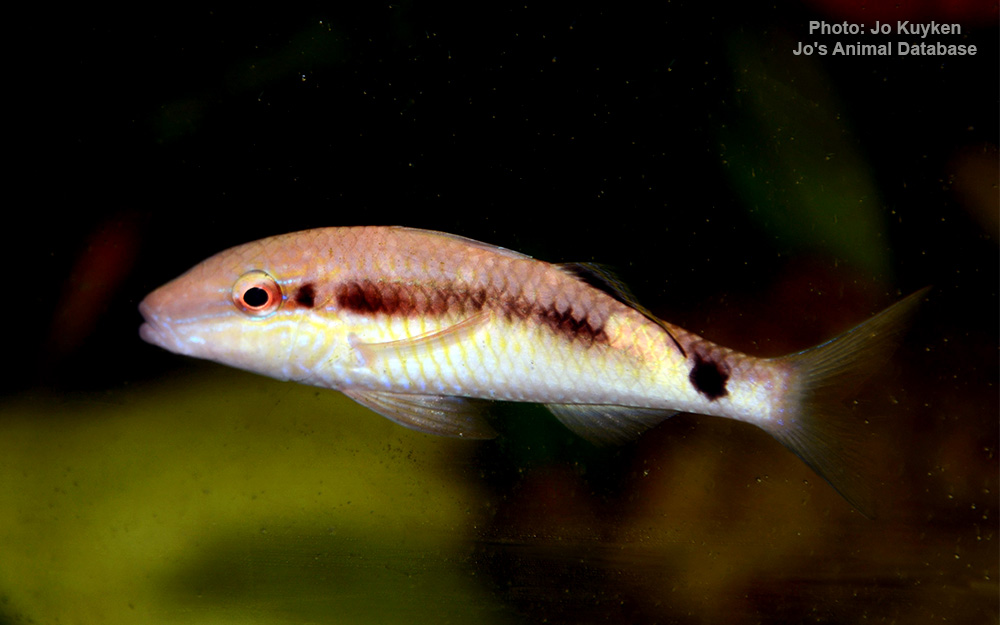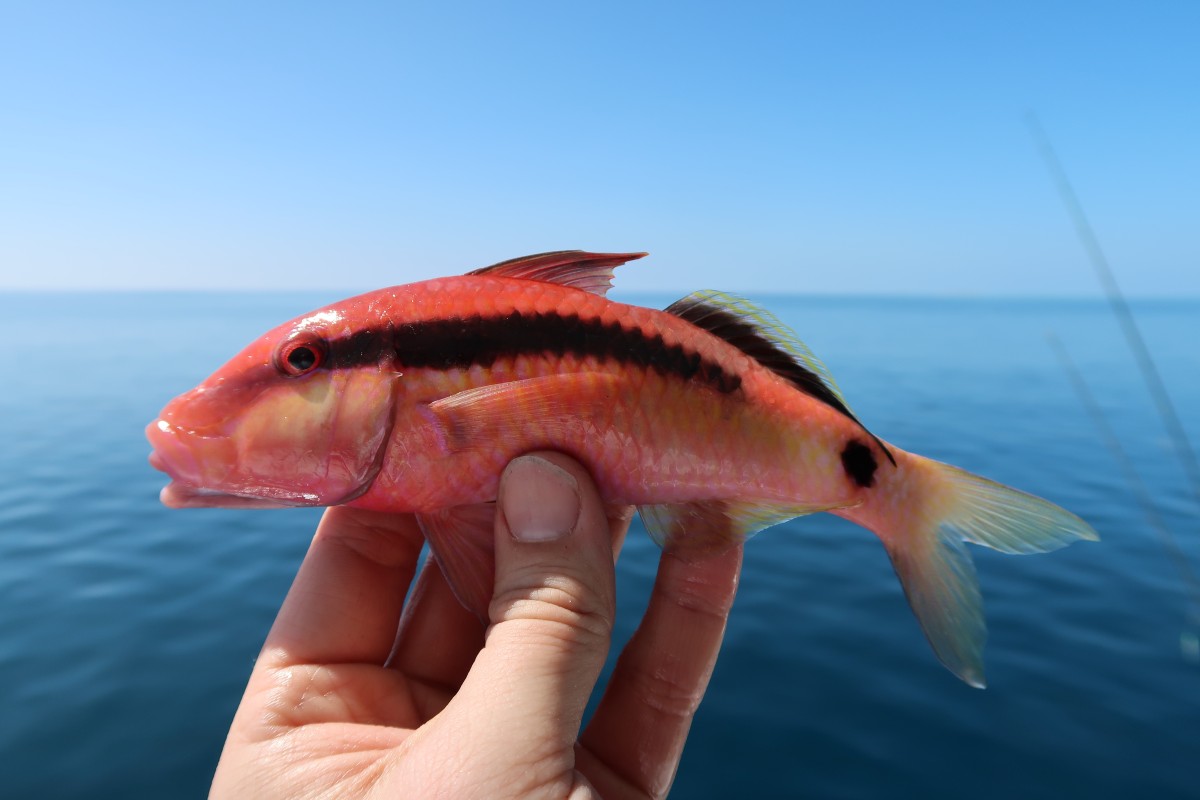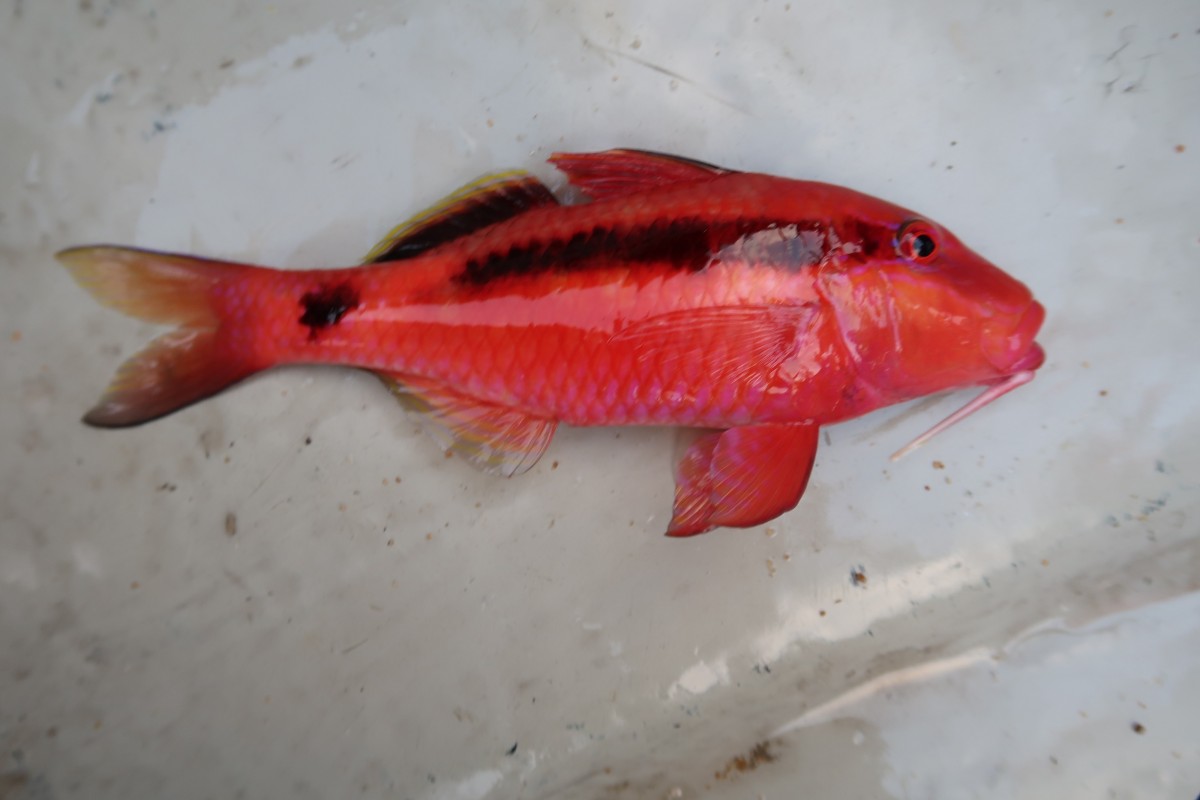Long-barbel goatfish
(Parupeneus macronemus)

Image source: Jo's Animal Database
Classification
General data
Indo-West Pacific: Red Sea and Persian Gulf south to Natal, South Africa extending east to Indonesia and the Philippines.
Max length: 40 cm TL
Dorsal spines (total): 8; Dorsal soft rays (total): 9; Anal spines: 1; Anal soft rays: 7.
Pectoral rays 15-17 (usually 16). Gill rakers 7-9 + 27-30 (total 34-39).
Body moderately elongate, the depth 3.3-3.7 in SL; head length (HL) 2.8-3.2 in SL; snout length 1.7-1.9 in HL; barbels long, their length 1.1-1.25 in HL; longest dorsal spine 1.45-1.75 in HL; penultimate ray of second dorsal fin of adults 1.25-1.6 in last dorsal ray, the last ray relatively longer with growth; pectoral fins 1.3-1.5 in HL; pelvic fins 1.2-1.45 in HL.
Body gray to grayish red dorsally, whitish to pink ventrally, with a black stripe from eye along lateral line to anterior part of caudal peduncle; a roundish black spot larger than eye on side of peduncle about two-thirds above lateral line; a broad white zone extending anterior to peduncular spot to below posterior part of second dorsal fin; a vertical pale blue line or spot often present on scales below black stripe; a dusky band often present on snout from eye to side of upper lip.
Barbels white.
First dorsal and caudal fins reddish gray; basal one-third to one-half of second dorsal fin black, the dark pigment continuing to end of last ray and adjacent membrane; outer part of fin with narrow pale blue and yellow stripes; anal fin dusky yellow with faint narrow pale blue stripes.
Pale area at end of black stripe and dusky basal stripe in second dorsal fin distinguished it from the similar P. barberinus.












